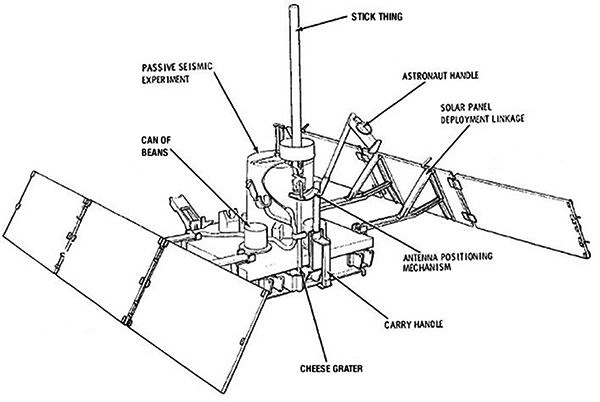
New analysis of data acquired by seismometers placed on the Moon’s surface in the early 1970s and laser measurements taken during recent lunar meteor impact events appears to support an ongoing, if unpopular, hypothesis that our Moon is in fact hollow.
Ever since the first measurements were made with the Passive Seismic Experiment instruments that were placed on the Moon during the Apollo 14 mission it’s been suspected by a few open-minded thinkers that our natural satellite could have an empty interior. This is based on the early statement that the Moon “rang like a bell” during moonquake events.

When the Saturn third stages impacted the Moon during later missions, the bell sounds were likened to a badly-tuned glockenspiel.
“All of a sudden I heard what sounded like Beethoven’s Ninth played on a line of stormtrooper helmets,” Apollo 17 commander Gene Cernan said during a 1997 interview. “It came right up through my Moon boots. It was hella strange.” (Source)
Now, an international team of researchers has reported that the Moon is really just an empty oblate spheroid—a vacuous interior surrounded by several hundred kilometers of gunpowder-flavored crust.
So what happened to the Moon’s insides? They likely leaked out onto its surface in the several tens of millions of years after its formation, the researchers suggest. (That is if you even believe that anything in the Universe is older than about 6,000 years.)
“Vast amounts of volcanism on the lunar surface during the Late Heavy Bombardment (LHB), 4 to 3.8 billion years ago, and then during the Super-Late Obnoxious Bombardment (SLOB) a half-billion years later caused continuous resurfacing on our Moon from the widespread eruption of subsurface magma,” said Lance von Verward of the Blöd Institute of Astrophysics in Nirgends, Germany and lead author of the paper. Where did the magma come from? “The interior, of course,” von Verward remarked condescendingly. “‘Magma’ comes from the Greek word for ‘gooey stuff on the inside.'”
What does a hollow Moon mean for us? Since we’re all here today and so far things have turned out relatively OK (Brexit and the 2016 U.S. presidential election notwithstanding) not much. But future astronauts will have to watch out that they don’t dig too deep lest they break through…or suffer the fate of the dwarves.
These findings were presented on April 1, 2017.
____________
Editor’s note: if you arrived at this article by way of an internet search or are from a country outside of this tradition, this is an “April Fools” joke. The Moon is not hollow (although there have been people who actually made that claim) and the research noted was fabricated. There were several seismic experiments set up on the Moon though, and Apollo 10 most certainly went there! If you fell for this last year, I sure hope you didn’t this year too.
I’d like a explanation as to why the moon fails to appear like a sphere that reflects light.
LikeLike
hola amigo podemo compartir truco y estrategia para ganar dinero
LikeLike
http://ganardineroonline.co/category/prestamista-hipotecario/
LikeLike